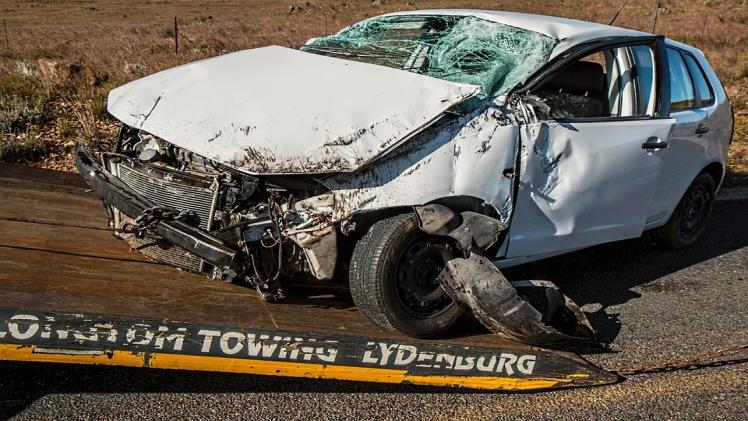Guest Post Contribution by Lem Garcia
Technology changes in time. In the last 2 decades the world has seen an unprecedented level of technological change and advancement which by many means is bigger than all the advancements we achieved in the last century. This is very much affecting the automotive industry. Automotive industry, are those companies and activities involved in the manufacture of motor vehicles, including most components, such as engines and bodies.
Automotive companies come up with new designs, updating their operational system that fits to answer the customer/driver’s need and satisfaction because vehicles are now considered a necessity nowadays. Vehicle will transport us easily from one place to another, delivering agricultural products or goods to far flung areas and answering medical needs of a person by bringing him/her to a nearby hospital.
Technology made vehicles from manual to automatic, which is very easy for the man behind the wheels to operate and much faster which made authorities implement driving regulations to keep the driver, passenger, pedestrian and others safe. And based on the data according to the Department of Transportation, motor vehicle crashes are the leading cause of death for 15-19 year-olds in the US. All parents want to keep their children safe, even if the child is the one who is driving. Unfortunately, car accidents are the leading cause of death for teenagers in the U.S., and teenage drivers have some of the highest accident ratings of any age group.
Why Teens are mostly involved with vehicular crashes

Motor vehicle crashes are the second leading cause of death for U.S. teens. There are also many personal injury cases across the country that involve teenagers. For personal injuries involving car accidents, contact Lem Garcia, this car accident lawyer near ocenside can help if you’ve been injured.
The following are the reasons for Teen Car Accidents:
1. Inexperience
Teens with less than two years of driving experience are not equipped to recognize and react to dangerous situations. They are inexperienced in reacting to unpredictable situations. Their eagerness to hit the road after earning a license is very high and with less inhibition. They thought after having a license, they are now allowed to drive without taking into consideration the risk that they may encounter along the way. Good driving techniques develop through experience and young drivers will inevitably make more mistakes during the learning stages.
2. Distracted driving
Distracted driving includes engaging in any type of activity that takes your eyes and mind off the road, such as using a phone, eating, turning the radio, and chatting with passengers. Teens have a tendency not to take things seriously; they are carefree, enjoying things while driving. Since driving requires cognitive, manual, and mental concentration, the tiniest distraction can lead to disaster. In a study, Twenty One (21) percent of teen drivers involved in fatal accidents were distracted by their cell phones. Teen drivers are 4x more likely than adults to get into car crashes or near-crashes when talking or texting on a cell phone. Distracted driving becomes even more dangerous at night time when visibility is reduced.
3. Driving under the influence of alcohol
Driving under the influence of alcohol can turn deadly even for experienced drivers. However, teenagers are generally more prone to engage in dangerous behaviour, they are three (3) times more likely than more experienced drivers to be in a fatal crash. Combined with lack of experience, driving while intoxicated becomes a common cause of teen motor vehicle accidents.
visit here to know more information : filmy4wep
4. Not wearing seat belts
A safety belt does not protect you when it’s not worn properly. During a crash, being buckled up helps keep you safe and secure inside your vehicle. Roughly two (2) out of every four (4) teenagers involved in a fatal crash were not wearing a seat belt including drivers and passengers. It has been proven that seat belts significantly reduce the risk of fatal and serious car accident injuries, and teenagers can endanger themselves and others by ignoring precautionary measures.
5. Speeding
Teens are more likely than older drivers to speed and allow shorter headways (the distance from the front of one vehicle to the front of the next), making illegal turns or lane changes, tailgating, and street racing. Nearly half — 43% — of all fatal car crashes involving teens and their passengers are the result of speeding, a new automobile safety report reveals. According to Governors Highway Safety Association (GHSA), which represents highway safety offices across all U.S. states and territories, Executive Director Jonathan Adkins said in a statement that the United States “has a speeding problem that has only worsened during the COVID-19 pandemic.” He further said that “Thousands of people die needlessly on our roads because some drivers mistakenly think less traffic means they can speed and nothing bad will happen. The data tell us that teen drivers are the most likely to be tempted to speed, so the need to address this issue is more critical than ever, given traffic death trends during the pandemic.”.
Teens are likelier to engage in risk-taking behaviour or activities compared to adults, they are adventurous, that is why they need proper guidance.
Keeping Teens Safe on the Road
In order to ensure and keep Teens safe on the road, the government implements stricter regulations, conducts education campaigns and encourages the parents or guardians to always remind their Teens to have safe driving behaviour.
Some of the stricter regulations are the implementation of Graduated Driver Licensing (GDL) Systems. The need for skill-building and driving supervision for new drivers is the basis for graduated driver licensing (GDL) systems. (check-out GDL Laws by states); enforcement of seat belt law, this will allow police officers to ticket drivers or passengers for not wearing a seatbelt, Visit the seat belt and child seat laws by state webpage; maintaining and enforcing minimum legal drinking age (MLDA) laws and zero tolerance laws for drivers under age 21 to help prevent drinking and driving among young drivers and there are states that prohibit all drivers from using handheld cell phones while driving.
The Department of Transportation also used the social media, television and other communication facilities to inform the Teens on the do’s and don’ts if or when he/she is driving. This Information and Education Campaign is another tool to reach them. These proven steps can protect the lives of more young drivers and everyone who shares the road with them.
Read More About: 0x00x0
Emerging Technology to help Teens safe on the road
Manufacturers start designing vehicles by also using the technology to help minimize the problem of road accidents involving the Teens. In an article written by Joe Dayton says that it might seem odd that the solution to preventing distracted driving is the same as what’s causing the problem—technology.
There are companies that have developed an application that a driver can respond to a text without using his/her hands. A cell phone blocking technology will prevent calls or texts from coming through when a car is moving. Many of these apps will also send an alert to let the sender know the recipient is driving.
There were cell phone blocking technologies but they may differ from each other:
AT&T DriveMode –The app is activated when the driver’s car reaches 15 miles per hour and blocks text alerts.
CellControl DriveID –The device attaches to the vehicle’s windshield and works with an app to prevent the driver from sending or receiving text messages. It can also block emails and smartphone cameras.
Apple iOS DND – Apple’s Do Not Disturb (DNB) While Driving mode blocks incoming calls and text messages when the user’s iPhone senses the vehicle is moving or connected to a car through Bluetooth.
There were also safety features installed by manufacturers:
Automatic Emergency Braking – Vehicles can engage their brakes automatically if its system senses a potential collision before the driver can react.
Lane-Departure Warning (LDW) – Drivers receive an alert if their car crosses over lane markings when their turn signal is not on.
Lane-Keeping Assist (LKA) -Similar to LDW, Lane-Keeping Assist will help steer or stop a vehicle if it starts to move out of a lane.
There is a monitoring system that will warn you if you’re tired or falling asleep. These alerts can come in the form of a chime, brake tap or pull on your seat belt.
A warning sound if the driver or passenger is not wearing their seatbelts.
All these additional safety features cannot prevent accidents if they aren’t used correctly, and these are just optional but it is still opt for the Teens to prevent her/him from accidents. Continued reminder, education and guidance from parents or guardians will be a big help to prevent that another Teen will be involved in a car crash, another life will be wasted.
Credits to the Contributor
Lem Garcia founded Lem Garcia Law in 2014. It has become one of the fastest-growing and most well-respected personal injury law offices in Southern California, having recovered millions of dollars for clients. He received a journalism degree from California State Polytechnic University in Pomona and loves to share personal injury law with the world via social media platform TikTok at over 20,000 subscribers.
If You Need More Information Visit AntMovies

